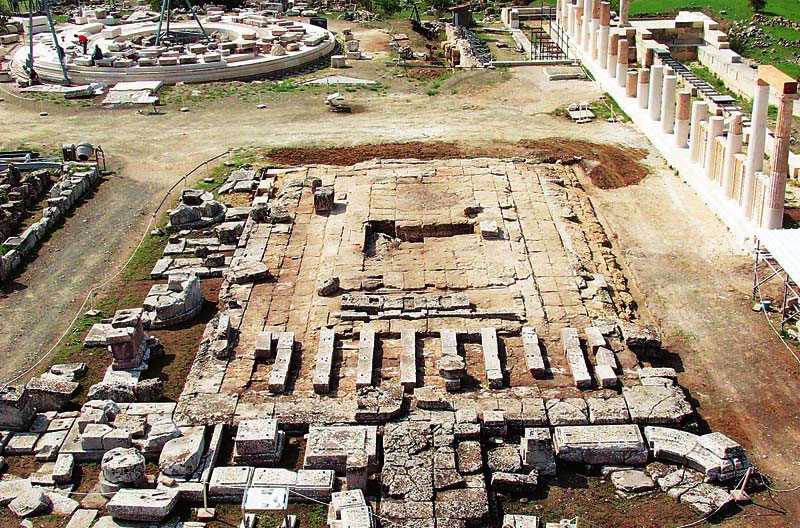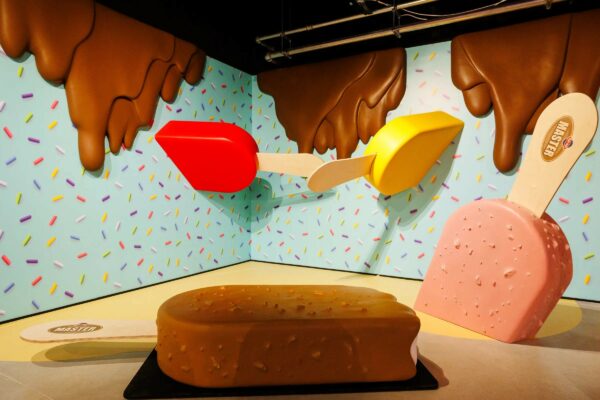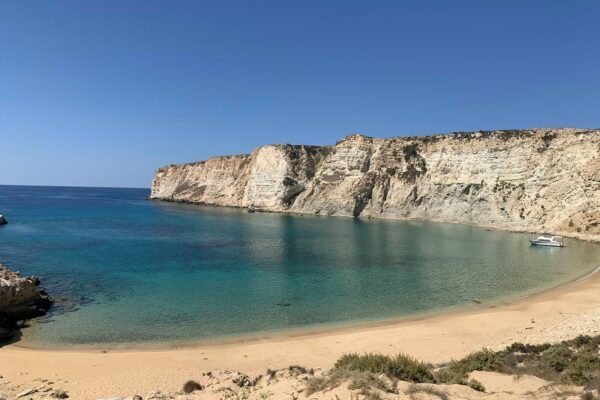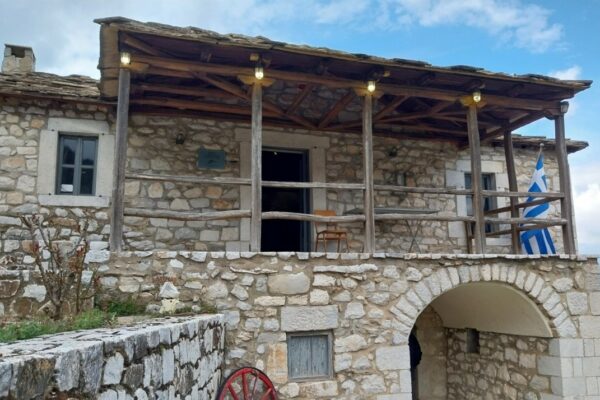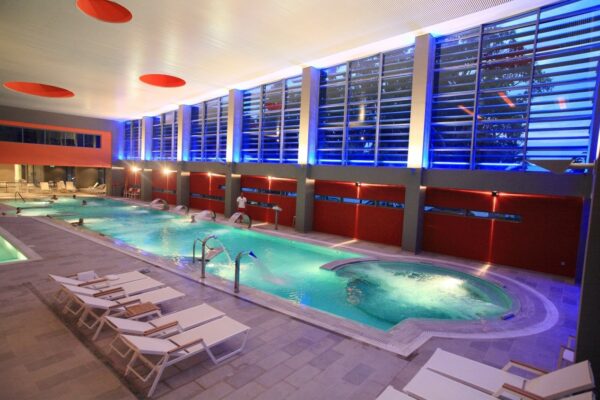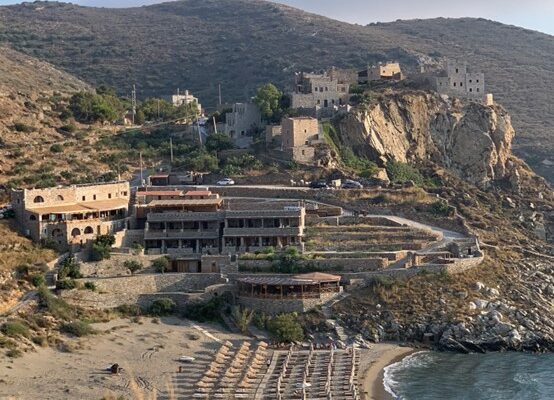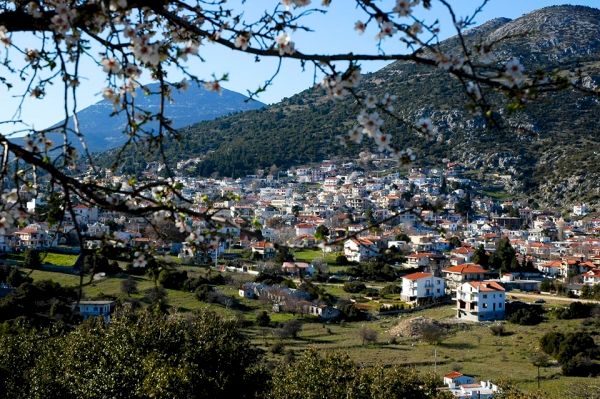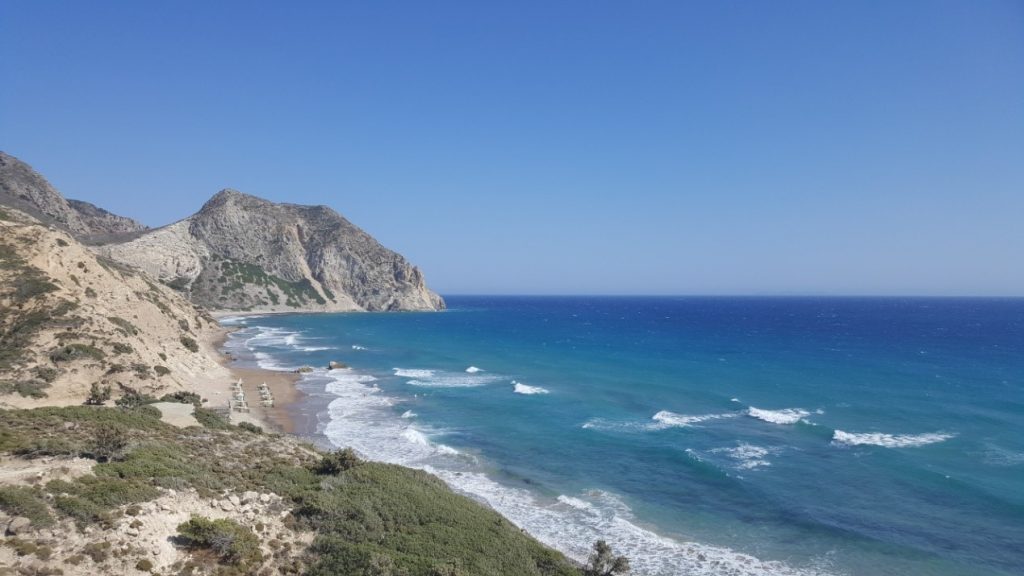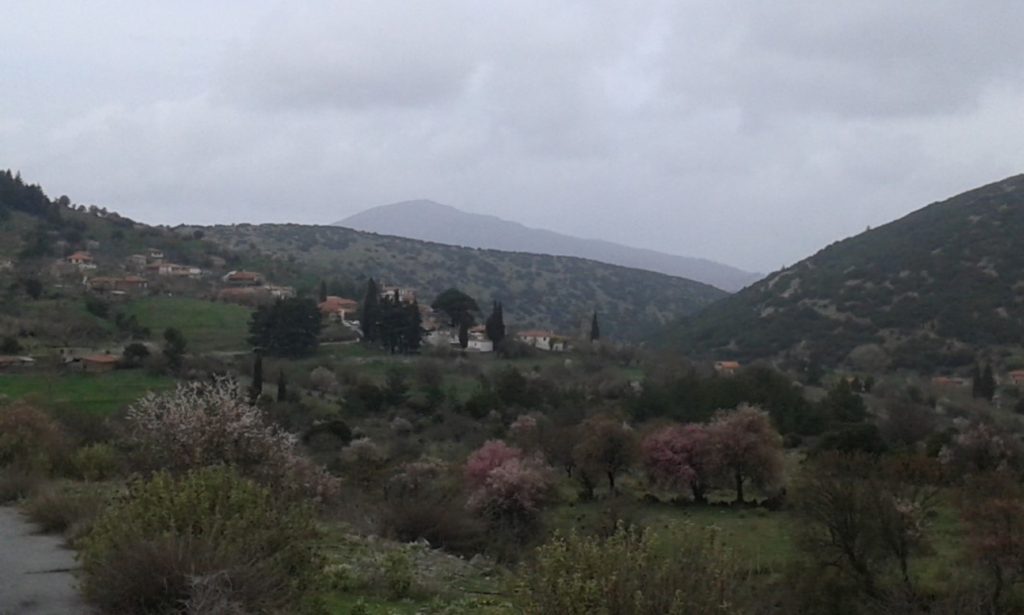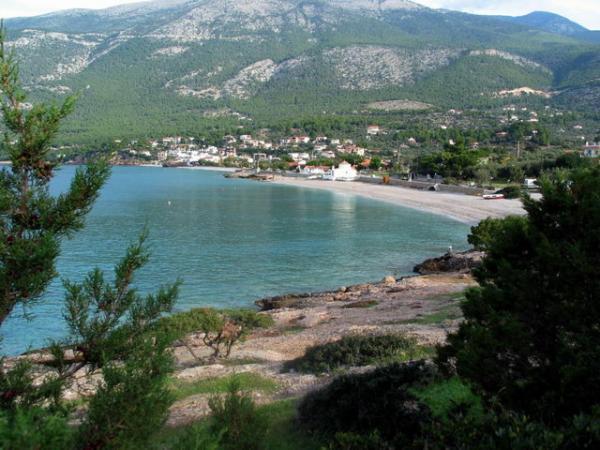Epidaurus – Archaeological site – Museum – sanctuary of Asklepios – Dome
ARCHAEOLOGICAL SITE
- sacred Way, leading from the port of Epidaurus to Propylaea.
- Propylaea, to B. of space, there were 2 rows of Corinthian columns and Ionic unlike Acropolis Propylaea was Doric and Ionic.
- Hostel or dive, square area, 76,30CH76,30 m., with storey buildings 160 Room, made so, to communicate by 4 courtyards, cruciform.
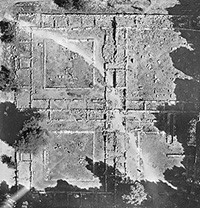
- greek Baths, located opposite the hostel
- High school, building measuring 76,00CH70,00 m., with inner courtyard to decorate 60 columns. Inside the building, during the Roman era, there Conservatory, the ruins of which, the stage and bleachers, They survive today.
- temple of Artemis, near the temple of Asklepios, Doric type. It was much simpler Temple of Asclepius, with 6 columns in front and 2 columns on the side. Within the temple, into 10 columns, there was the statue of the goddess which was called Hecate and had a very close relationship with the cult of Asclepius. The exercise of Artemis worship in the sanctuary dates back to the 5The century. Fr.. X, according to the inscription has been found. Characteristic embellishment of the church were the gutters, wherein at one end they had the form of pig head and the other dog head, They related to the nature of hunting goddess Artemis.
- temple of Themis
- Lodge of Kotys, building patient decubitus.
- Inaccessible or enkoimeterion, wherein the face of the building were 26 Ionic columns and inside, there were 23 pillars that supported the roof of the building. It had 2 long corridors, where patients slept, "Periodic death ', the Holy Land, and expected to appear in a dream the god Asclepius, for the cure.
- holy Well, depth 17 m., in A. of Abaton, which was the purification and treatment of water use. Adjacent there Columns Tables and Writing on which are inscribed the patient cures, after the miraculous intervention of God. The Well or Fountain were key elements of healing, which was achieved with the process of cleansing and "slumbers", near water.
- Dome, it had 3 concentric, spiral corridors, preserved in excellent condition.
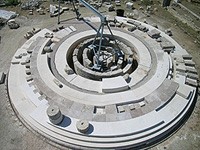
- temple of Asclepius, Doric type.
- Altar, next to the Temple of Asclepius, which deposits the gifts to God. Usually was Votives, clay or metal, reminiscent to the treatment of human body parts. Many times spent Hymns to thank God for their curing it.
- Roman Baths
- Stage, he had a length 181 m. and communicated with Sacred Space with basement corridor. The findings from the Hellenistic period.
- Museum
- Ancient theatre of Epidavros
- Remains of early Christian church dedicated to Saint John
- Ruins Hippodrome chariot, ND. Stadium, in the distance 3 km.
- Ruins of the Temple of Apollo Maleatas, NW. the Sanctuary of Asklepios, Mount Kynortio. Founded around 800 B.C. dedicated to Apollo, god with therapeutic properties, worshiped here as Apollo Maleatas.Ta two Holy, one dedicated to Apollo Maleatas and another to Asclepius, developed in parallel, with the official name "Malea temple Apollo and Asclepius».
ARCHAEOLOGICAL MUSEUM EPIDAURUS
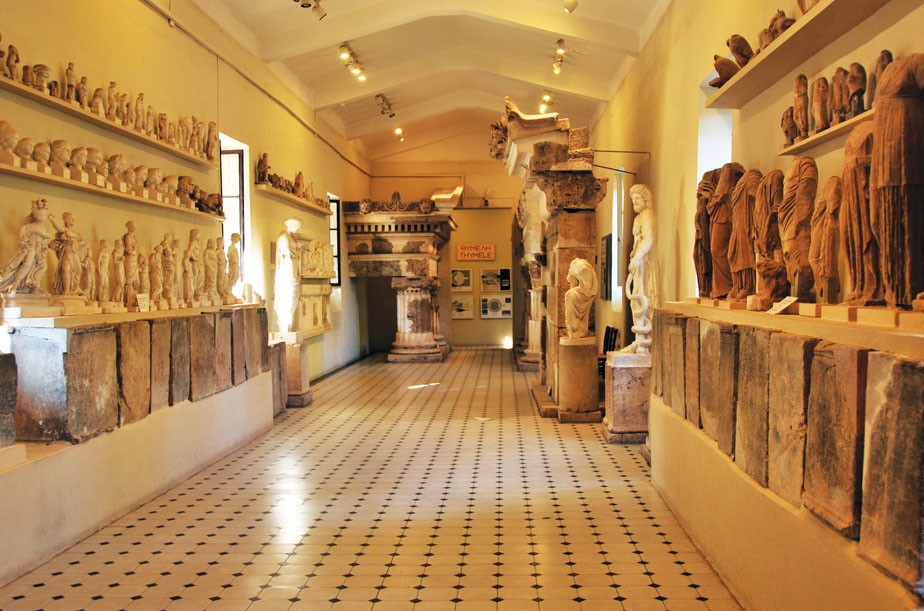
Located in the archaeological site of Epidaurus and is built (1902-1909) by the head of the excavations, Panagiotis Kavvadia. Built to house some restorations of Asklepios monuments and the most important archaeological finds.
Most sculptures excavated, transferred to the National Archaeological Museum of Athens and replaced, the Museum of Epidaurus, from their plaster casts.
Its collections include: Signs with building plans, Signs offerings, Sacred Hymns to the god Asclepius, Greek and Roman sculptures Votive, Votive and honorary Signs, architectural restorations (entablature-sima), Propylaea monuments, temple of Asclepius, temple of Artemis, architectural monuments of the Sanctuary of Asklepios, pediment sculptures etc..
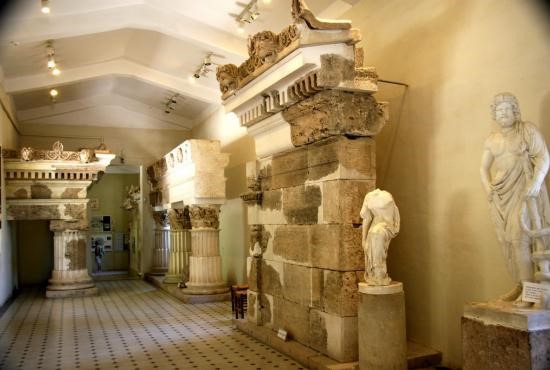
MUSEUM COLLECTIONS
The museum consists of 3 rooms.
in 1or room are Medical and surgical instruments (tongs, knives etc.), Signs with recipes and treatments, Signs on building construction cost reports, etc., found in the Altar. In one corner of the room there are 4 statuary, where the 3 statues represent men of Roman society and 4The a woman, probably of the Hellenistic period or the beginning of the Roman.
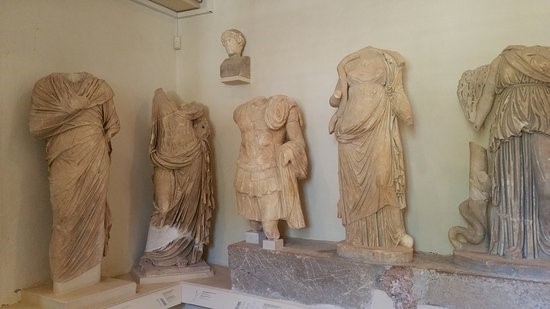
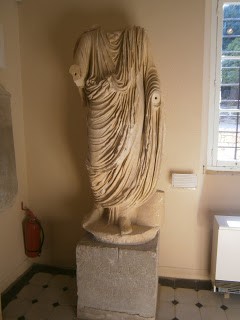
In the hall there Pelmets, with lion heads plans, open mouth, from the Sanctuary of Asklepios, that served to expel water, i.e. as gutters.
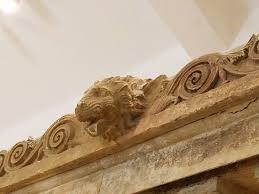
Gutters SHAPED LEONTOKEFALIS
in 2or room there are Votive offerings found at Altar, building elements of the Temple and statues (casts).
Most exhibits are replicas as the originals are in the National Archaeological Museum of Athens.
OR 3or Hall is full of architectural parts of the most important building of the sanctuary of Epidaurus space, Tholos. Here is a Corinthian column capital, found intact just beyond the Dome, work rather, Polycleitus of the younger, constructed and Dome.
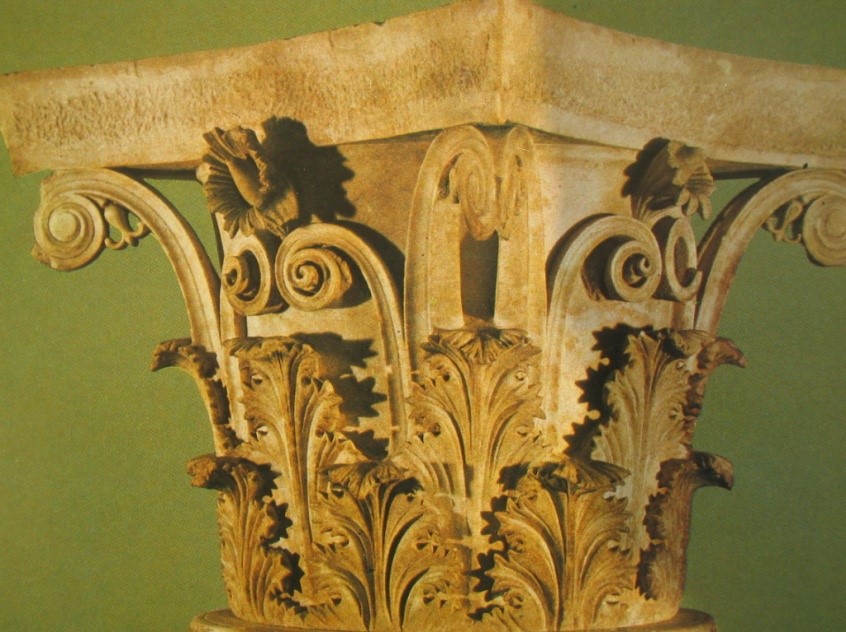
THE Corinthian capitals of THOLOS
SANCTUARY ASKLIPIOU – ASKLIPIIO
The Sanctuary of Asklepios, the archaeological site of Epidaurus, It came to light after excavations (1881-1887), the Greek archaeologist Panagiotis Kavvadia. According to mythology, Asclepius was the god of medicine.
He was the son of Apollo and Koronis, daughter phlegyas, King of Lapiths, Thessaly. Apollo fell in love madly Koronis and united with her. When the Koronis realized he waited his child, He married a younger, the hip, son Fir. But this infidelity, the learned Apollo, by his faithful servant Korakas, which until then they were white but God into anger cursed him and made him black. Then he killed the Koronis, and the burning of the dead body of, through the fire, He took the child. The child, Asclepius, He moved to Pelion, where the educator was the centaur Chiron, from whom he learned the use and treatment of many healing herbs and recipes.
Asclepius was able, except for the treatment of patients, to resuscitate the dead, thereby changing the balance between living and dead. Hades for fear of losing his kingdom, if resurrected all the dead, He begged his brother, Zeus, to help him. Zeus, to meet Hades, He threw lightning and burn Asclepius.
The first cult of Asclepius, placed in Thessaly namely Trikala, wherein unfortunately the oldest Sanctuary (7th century. B.C.). According to legend, the Koronis joined Apollo, in Triki, today Trikala, on the banks of river Lethaeos.
In Athens, The cult of Asclepius, displayed the 5The century. B.C. since that time, town plagued by a cholera epidemic. In the ancient city Sikyon, an area of West Corinth, at the mouth of Asopos, excavations unearthed the Sanctuary of Asklepios. The famous Asklepieion Kos, unlike the Sanctuary Asklepios at Epidaurus, scientific medicine developed, wherein taught and Hippokratis. Another famous sanctuary was in Pergamum. Also in Rome was similar Asklipeio. this created, the 293 B.C. when the city suffered from a terrible and incurable epidemic.
The god Asklipios cured in the form of a snake. According to the Votive reliefs, found in excavations (most of them are in the Archaeological Museum), the patient or put a snake on it and was well, or saw it on a tree and leave healthy, or saw it in his sleep etc..
The Temple of Asklepios at Epidaurus
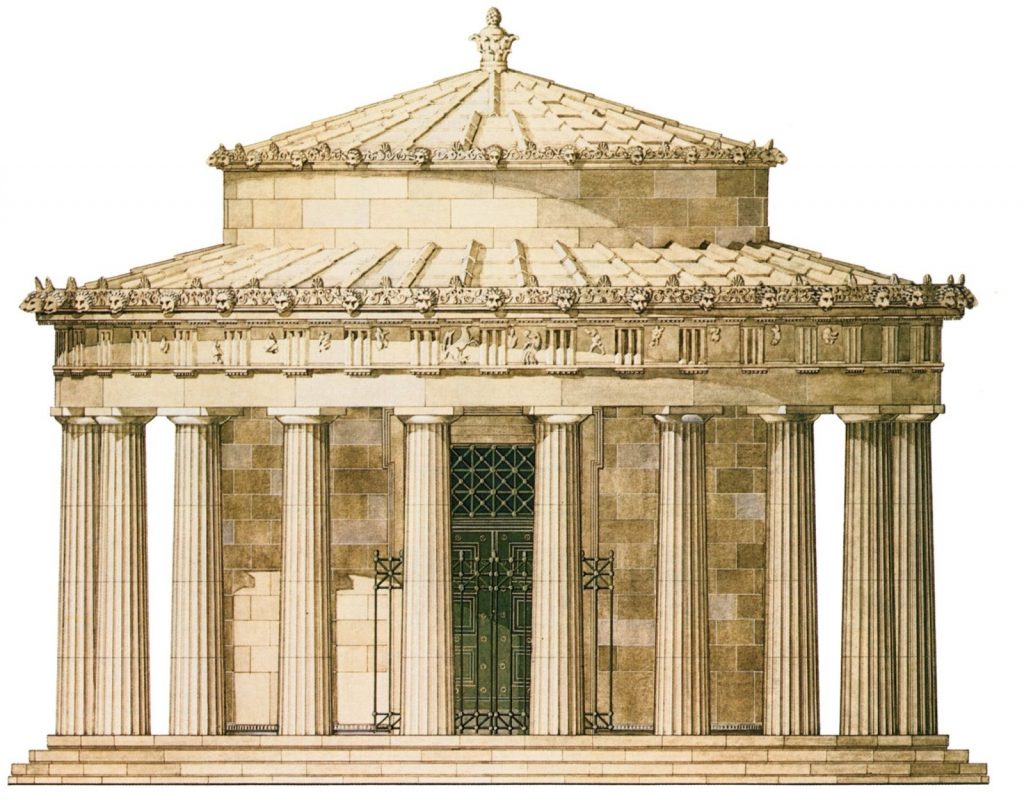
The Temple of Asclepius was constructed by architect Theodotus, the 380 -370 B.C. It belonged to smaller churches, formula Doric kiosks and had built in an area of dimensions 11,76CH23,06 m. The pavilion Temple, is a type of temple architecture in ancient Greece. Characteristic is that alcove, which is enclosed by a series columns, the so-called Circumstance, which form the space between the circumstances and the Temple, the Wing. The temple had 6 x 11 Doric columns on the Occasion, while 2 Additional Doric columns were between the jambs, the entrance to the vestibule.
The floor of Peristasis, It was marble, with contrasting colors, dark and white marble, just as the Temple of Zeus at Olympia and the Temple of Apollo in Delos. Access to the building was through a ramps, in A. Temple. The temple consisted of pronaos and cella (i.e., the interior space, wherein usually kept statue god), with internal currant collonade in Scheme II. The Corinthian colonnade surrounded the gold and ivory statue of the god, work of Parian sculptor Thrasymedes.
The form of our statue are known from the description of Pausanias, from coins of the city and of Epidaurus 2 marble reliefs. The god was depicted seated on a throne, with a cane in one hand and a serpent in the other. On the side of a dog sitting. The throne was decorated with mythological scenes. The Entrance door was wood, ivory and decorated by gold nails. internally , in the nave floor, there was a case, which kept the assets of the Holy and precious Votives.
The exterior decoration included Metopes, decorated with rosettes, pedimental compositions , sculpted Capes and gutters in FIG lion. The two narrow sides of the Temple, with 6 columns, It was full of statues. In the eastern pediment depicts the battle Greeks - Trojans and West battle Greeks -Amazonon, the Amazons. All these are now at the National Archaeological Museum.
At the edges of the building, in Capes, There were statues of horseback "auras" and "Victory", made of Parian marble, sculptor Timothy. The "Aura" symbolized the "Regeneration" and "Victory", which holds a partridge, health".
Most statues of the god Asclepius carved from Alkamenes of Mantinea, the Kanachos of Sikyona, by Kephisodotos, Scopas and Bryaxis. All the statues depicted venerable Asclepius, with wavy hair and beard. The god wears a tunic and left hand resting on rod around which winds a snake. Generally the snake is permanent attendant god as originally worshiped the animal form and then in human form. At other times, Asclepius, accompanied by Telesphoros, god of magical healing and the other female figure goddess of Health. Many refer to this deity as a daughter of Asclepius.
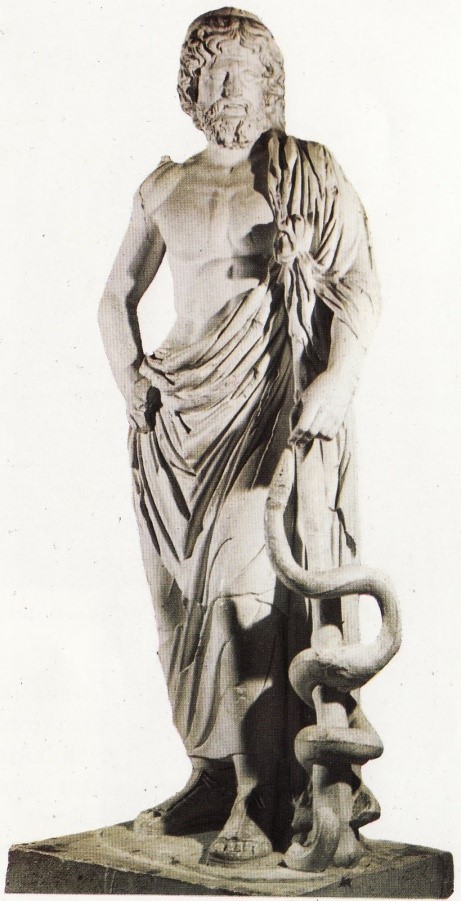
GOD ASKLIPIOS
The DOME OF EPIDAURUS
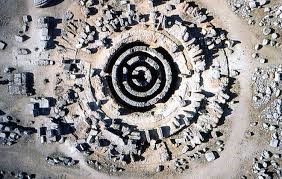
The Dome of Epidaurus, It was the perfect circular structure of the site, with extremely rich architectural details in decoration. The construction of, according to the cost inscriptions found during excavations, placed 360-320 B.C. Manufacturer and sculptor impressive building, was someone Polyclitus, rather grandson or something related to the great sculptor Polycleitus, of 5th century. B.C.
After the Dome of Epidaurus, The dome of Athens constructed, in Ceramic (530 B.C.), the Dome of Athens, Ancient Market (Prytaneion,465 B.C.) and the Dome of the Sanctuary of Athena Pronaia (380 B.C.), in Delphi, which was the architect Theodore seals. The Dome or Thymeli was made of Paros and Penteli marble, limestone Elefsinas from local materials.
The Superstructure had 3 concentric circular rings. Externally there poros Circumstance, from 26 Doric columns, which surrounded a limestone nave. A second circular collonade, from 14 marble columns, Corinthian, decorate the interior of the nave.
the floor, within the Corinthian colonnade, shaped by white and black diamond-shaped plates, in a unique geometric design arrest. On Perivolos Roof adorned ornate marble panels, by rosettes and acanthus leaves. The building had a wooden conical roof, covered with a complex marble tiles system while, on top of the Roof, It was placed a sophisticated central plant cape. From Pelmets, the building, who was full of narrative performances, parts preserved decorated with rosettes, tendrils and acanthus gutters lion heads.
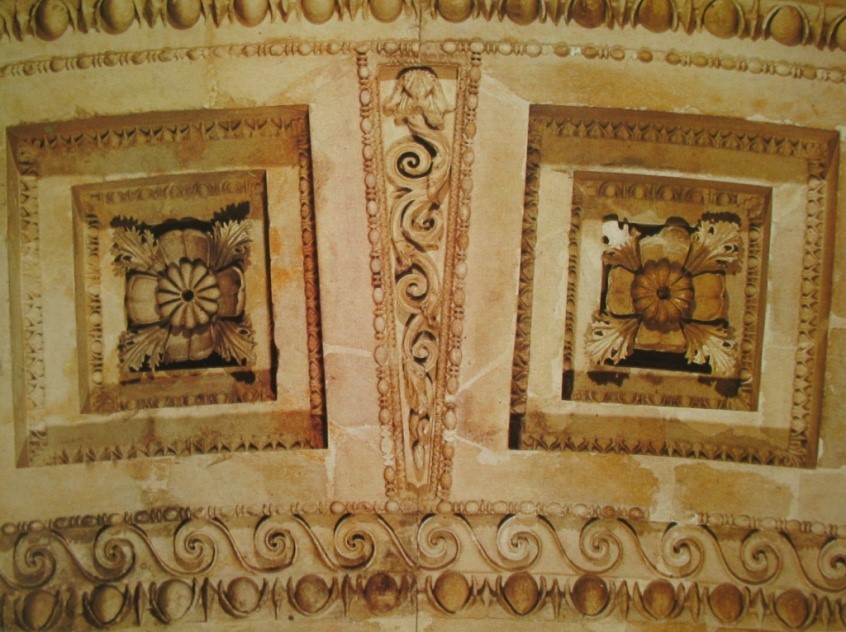
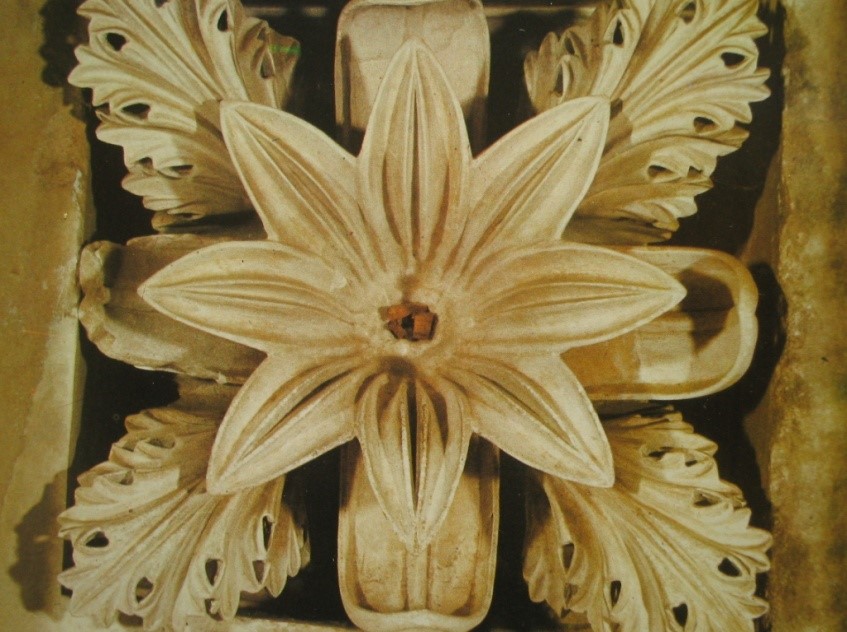
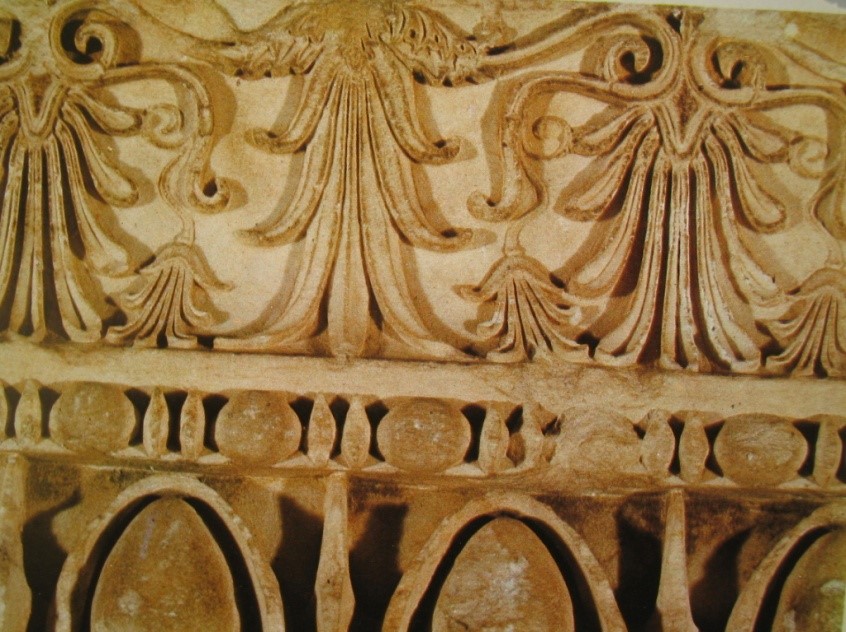
From inside the dome and in particular from the Door Entry, preserved decorations that existed under (perithyro), of rosettes and palmettes, as is the decor of the Erechtheion. By Pausanias learn that, Inside her, there pictorial representations, the painter Pausias.
Below the floor was complicated, and has survived, a tripartite basement, the Crypt (basement), which probably served for the accommodation of Sacred Serpent, worshiped for its healing properties and is often Asclepius, take the form of. Circular Walks, who were the, They communicated through openings and there were dams forced inbound to follow a path in labyrinth form.
The Dome, first destroyed by the great earthquake 6th century. m. X. while the 18th century. began grabbing poros members, calcification of marbles and removal of metal components of. Material from the Dome was also built in Byzantine monuments of the wider region.
After the excavations ( end 19th c.), the monument survived only 3 stereobate of Superstructure and underground labyrinth tripartite structure.
THE ROLE OF THOLOS
The cyclic structures in ancient Greece, fraud as many Holy Dome of Epidaurus, next to the Sanctuary of Asclepius and the vaulted tombs of Mycenae, allegedly linked to the cult of heroes and chthonic deities, but no ancient evidence for their use.
Another interpretation, for being clouded, based on the assumption that the Greek area receives strong geomagnetic effects of radiation, which are divided into positive and negative effects geopathitikes. indeed, It has proved, during the night, negative effects tripled compared to the day, so the ancients had deified the Sun, which positively acts against Geopathy.
Some positive geomagnetic radiation, emitted in places such as Epidaurus, Mycenae and Delphi is among the strongest in the world. In all three cases, are circular buildings which serve to concentrate these positive geo-energy impacts. All three buildings, exhibit strong positive radiation, which appears to be reinforced by the spiral form of the bases of the circular shape. The Archaeological Site of Epidaurus, such buildings, is the Sanctuary of Asclepius and especially the Dome.
USEFUL ADDRESSES
Sanctuary of Asklepios Epidaurus, Lygourio, N. Argolida, tel. 2753022009 & 2753027502

